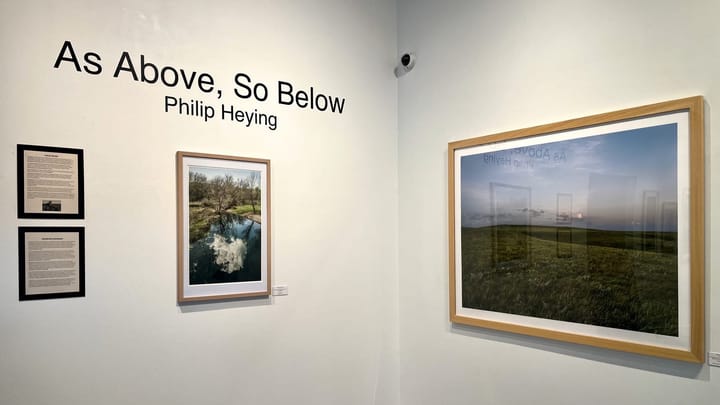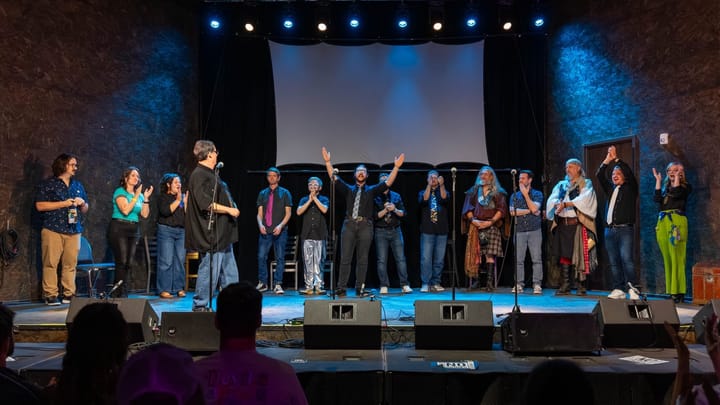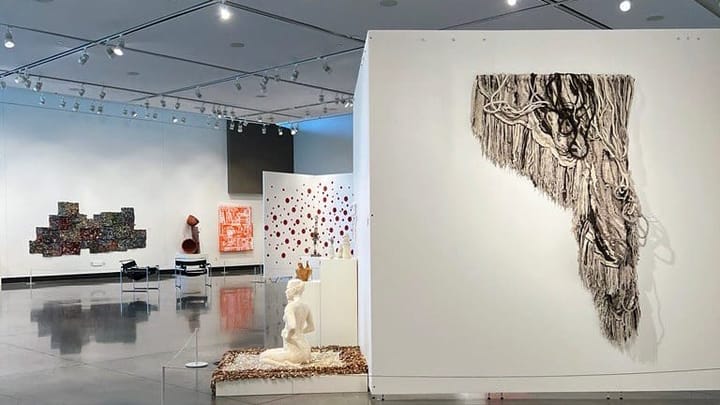Adventurous visions: The Wichita Symphony opens its season
The institution demonstrated its commitment to keeping the repertoire lively and forward-leaning in a pair of concerts October 4 & 5.
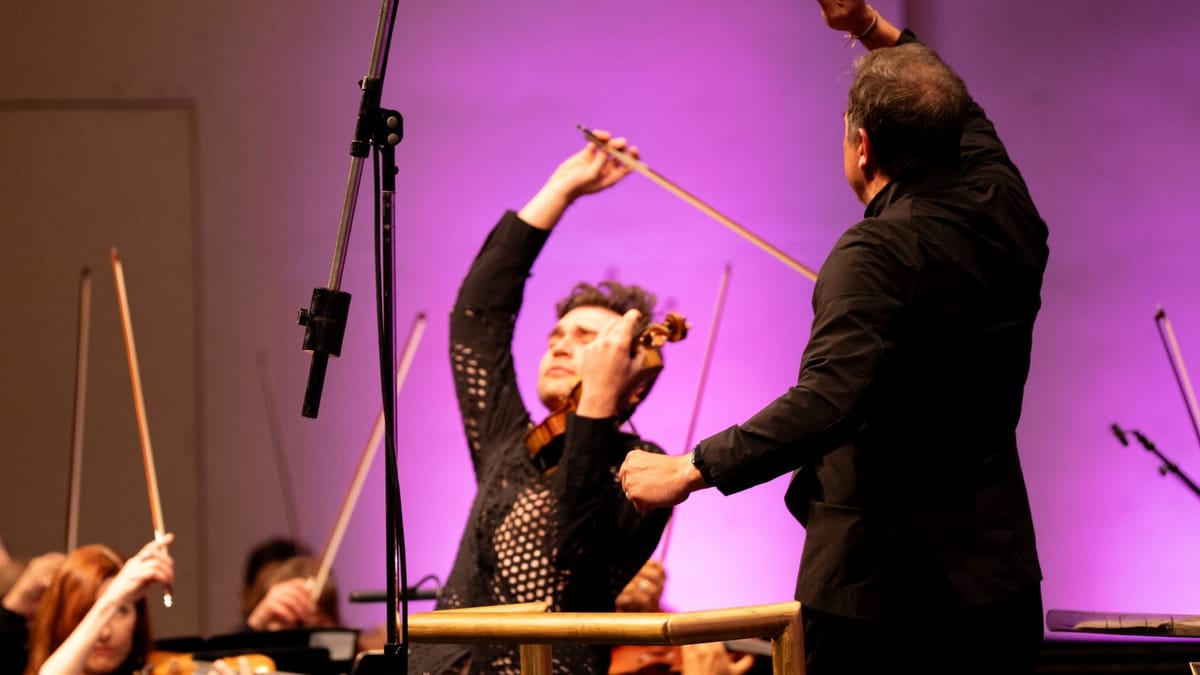
Art lives by two currents: the novel and the familiar. Too much novelty and an artwork can feel cold or incomprehensible; too much familiarity and you get bored, tune out.
It’s easy to assume a symphony orchestra operates in the territory of the familiar. Much of the repertory is at least a century old, and a short list of pieces is performed again and again. Yet the Wichita Symphony’s opening weekend — Alexi Kenney’s solo “Shifting Ground” and the full orchestra’s season opener, “Symphonic Metamorphosis” — offered a more adventurous vision built on trust between artists and audience.
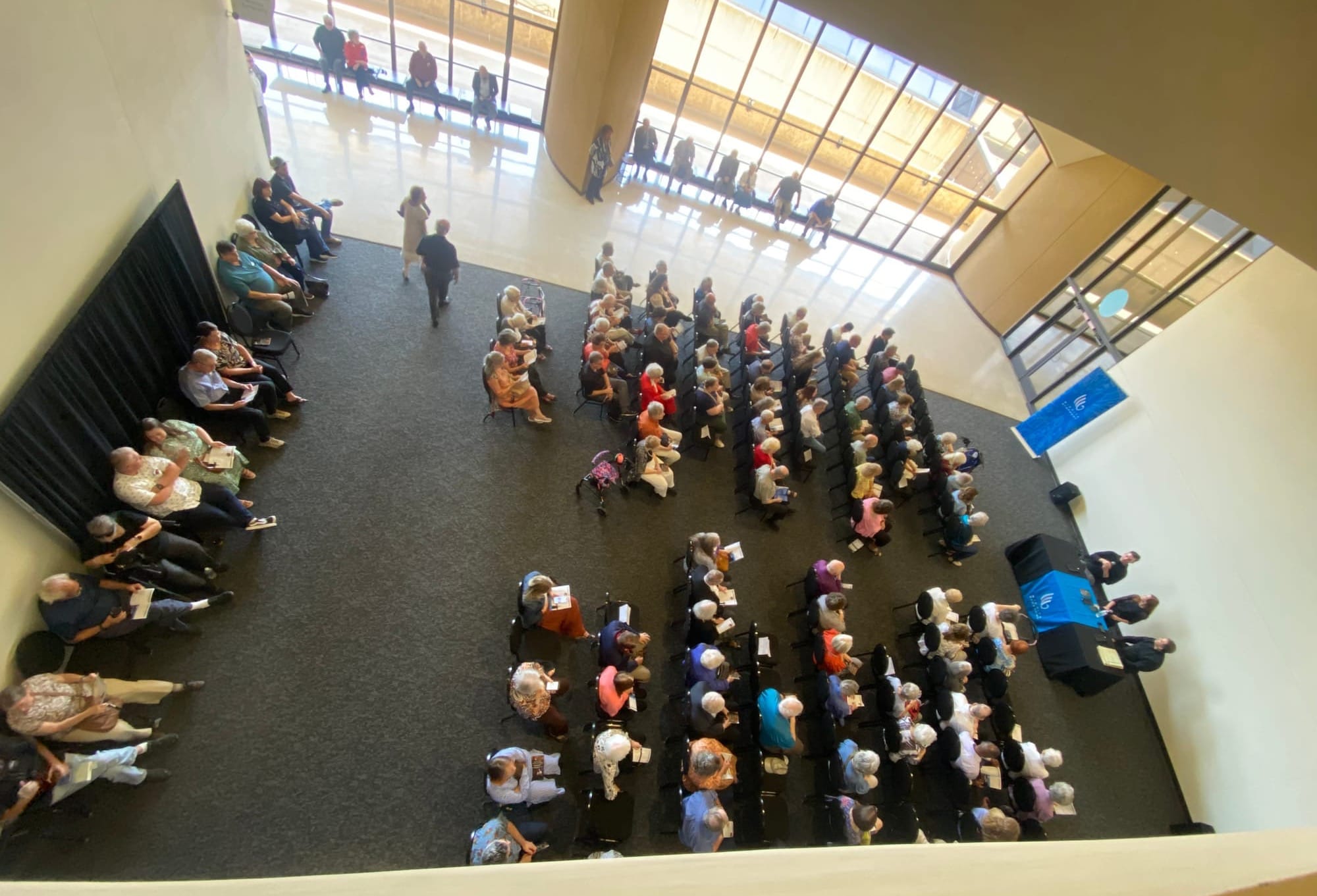
That trust led a strong opening-weekend crowd to turn out for a program anchored by a less-familiar concerto: Korngold’s Violin Concerto in D major.
During a pre-concert talk held in the Concert Hall’s second-floor lobby an hour before showtime, Kenney said that he doesn’t find the concerto terribly difficult. That’s an extraordinary statement, given its frenetic technical fireworks, but he backed it up in performance. It didn’t seem difficult, but natural, sprightly and lithe.
Our free email newsletter is like having a friend who always knows what's happening
Get the scoop on Wichita’s arts & culture scene: events, news, artist opportunities, and more. Free, weekly & worth your while.
No spam. Unsubscribe anytime.
The Korngold idiom is familiar because of his influence on fellow film composer John Williams. What’s novel is the way Korngold deploys that now-familiar “Hollywood” language inside a classical frame. The concerto is unabashedly melodic, carried along less by motivic argument than by progressive additions of color and emphasis. The culminating restatement of the finale’s rondo theme rolled out round and huge, filling the Century II Concert Hall’s acoustic space impressively.
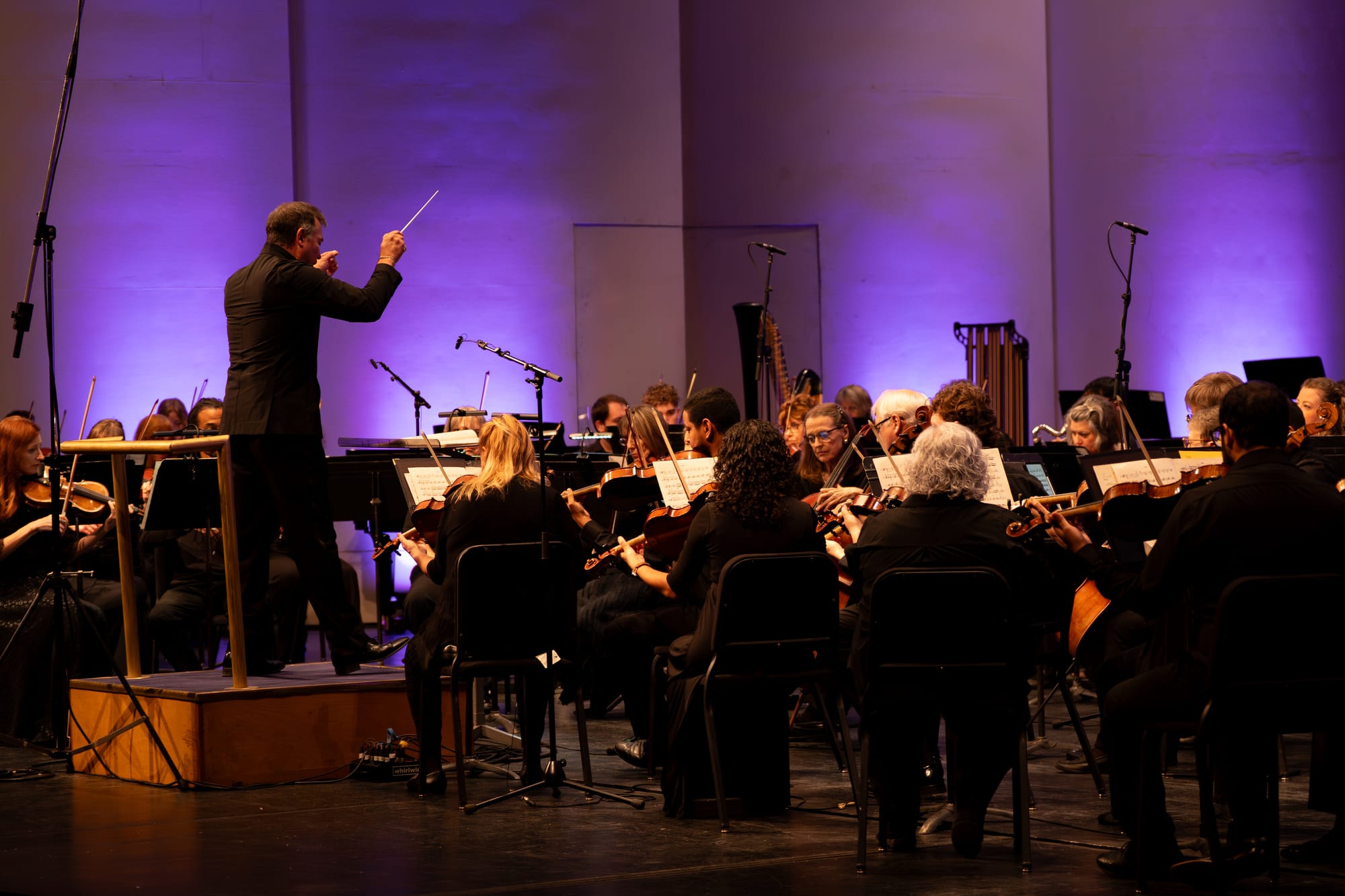
If the timing of Kenney’s two Wichita appearances had been reversed, some of Sunday’s Century II audience would surely have made their way to Friends University’s Sebits Auditorium to hear “Shifting Ground,” the solo recital Kenney has been developing and performing over the last several years. Still, there was a decent crowd to hear and see the program, which encompassed Bach works for solo violin and contemporary pieces by composers such as Kaija Saariaho and Paul Wiancko, on Saturday night.
Friends has a nifty projection system that filled a screen at the back of the stage with semi-abstract films by Kenney’s collaborator, the media artist Xuan. Kenney stood in the middle of an empty stage, at times framed by a rectangle of white light, at other times left in darkness, or silhouetted from left, right, and overhead. He wore harem pants and a pair of metallic silver boots, which, together with the lighting and video elements, contributed to the striking theatricality of the whole presentation.
Beginning from Baroque ideas of ground bass (a repeating pattern over which variations unfold), the program explored how the ground can shift so that the violin’s voice emerges in refracted forms. Kenney alternated purely acoustic solos with pieces that extended or echoed his sound electronically. The newer works asked what happens when that base is stretched, layered, or partly obscured. Against such changes, the solo line could come forward, fall back, or split into implied counterpoint. By shading attacks and shaping endings, Kenney often suggested multiple voices within single lines.
The monumental Chaconne from Bach’s Partita No. 2 concluded “Shifting Ground,” and its combination of rigor and passion felt as experimental as the contemporary works that preceded it.
For the remainder of “Symphonic Metamorphosis” at Century II on Sunday, Maestro Daniel Hege made programming choices that put an interesting spin on the standard season-opener template. He kept the familiar opener-concerto-closer sequence that these concerts tend to fall into but avoided the usual warhorses.
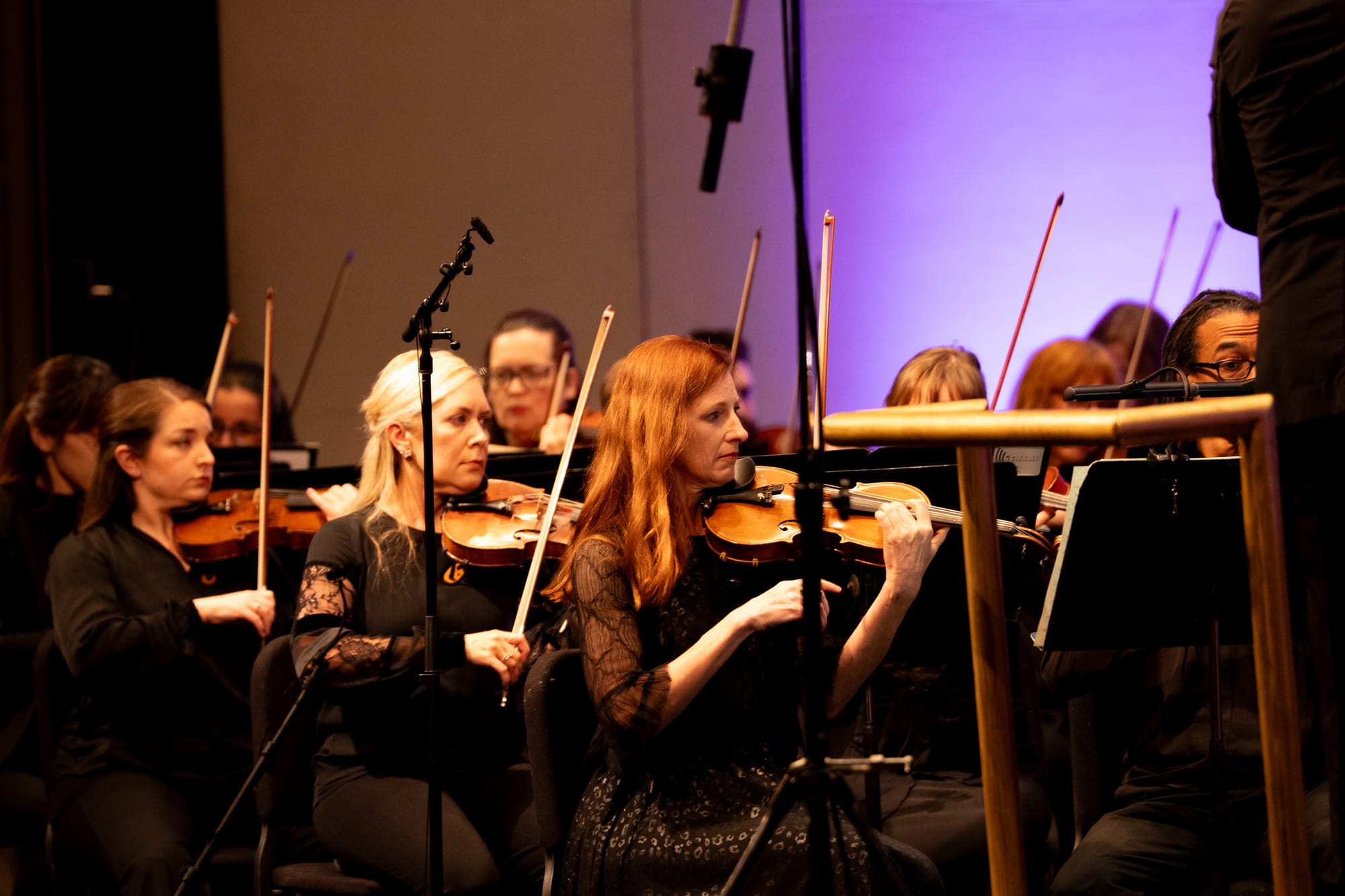
Instead of a bubbly curtain-raiser, Hege chose Verdi’s overture to “La forza del destino.” The performance was taut and darkly urgent, with hammering brass fanfares evoking the overwhelming fate of the opera’s title.
Christopher Theofanidis’s “Rainbow Body” opened after intermission. Built on a medieval chant, the writing is modern in style but direct in its appeal, with some cinematic outbursts that put me in mind of the Korngold of a few minutes earlier. During the work’s final climax, the composer directed the string and percussion players to burst into cheers — a delicious surprise. Hege clearly believes in the piece; he also performed it with the WSO in March 2012..
Hindemith’s “Symphonic Metamorphosis of Themes by Carl Maria von Weber” provided the big finish. Hindemith took four unassuming “deep cuts” from the catalog of Weber, an early-Romantic German composer, and charged them up into something big, bold and oddly off-kilter. Still, it was a closer with plenty of punch. In its opening concerts, the Wichita Symphony showed itself ready and able to play challenging music with aplomb, and intent, as an institution, on keeping the repertoire lively and forward-leaning.
Correction: This review was updated on October 12 to reflect that the WSO last performed "Rainbow Body" in 2012, not last year. Learn about our commitment to sharing accurate information.
Sam Jack is a poet, a classical tenor, and the adult services librarian at Newton Public Library. He performs with several local groups, including Wichita Chamber Chorale, Wichita Grand Opera, and Opera Kansas. He received a Master of Fine Arts in creative writing from the University of Montana.
❋ Derby man has the kind of voice that turns heads — and chairs
❋ Socializing while sober: how some Wichitans are cultivating alcohol-free communities
❋ As a small creative business closes, the owner mourns
❋ Painting through it: Autumn Noire on 20 years of making art
❋ How a guy from Wichita resurrected 'Dawn of the Dead'
❋ Bygone Friends University museum housed curious collections
Support Kansas arts writing
The SHOUT is a Wichita-based independent newsroom focused on artists living and working in Kansas. We're partly supported by the generosity of our readers, and every dollar we receive goes directly into the pocket of a contributing writer, editor, or photographer. Click here to support our work with a tax-deductible donation.


